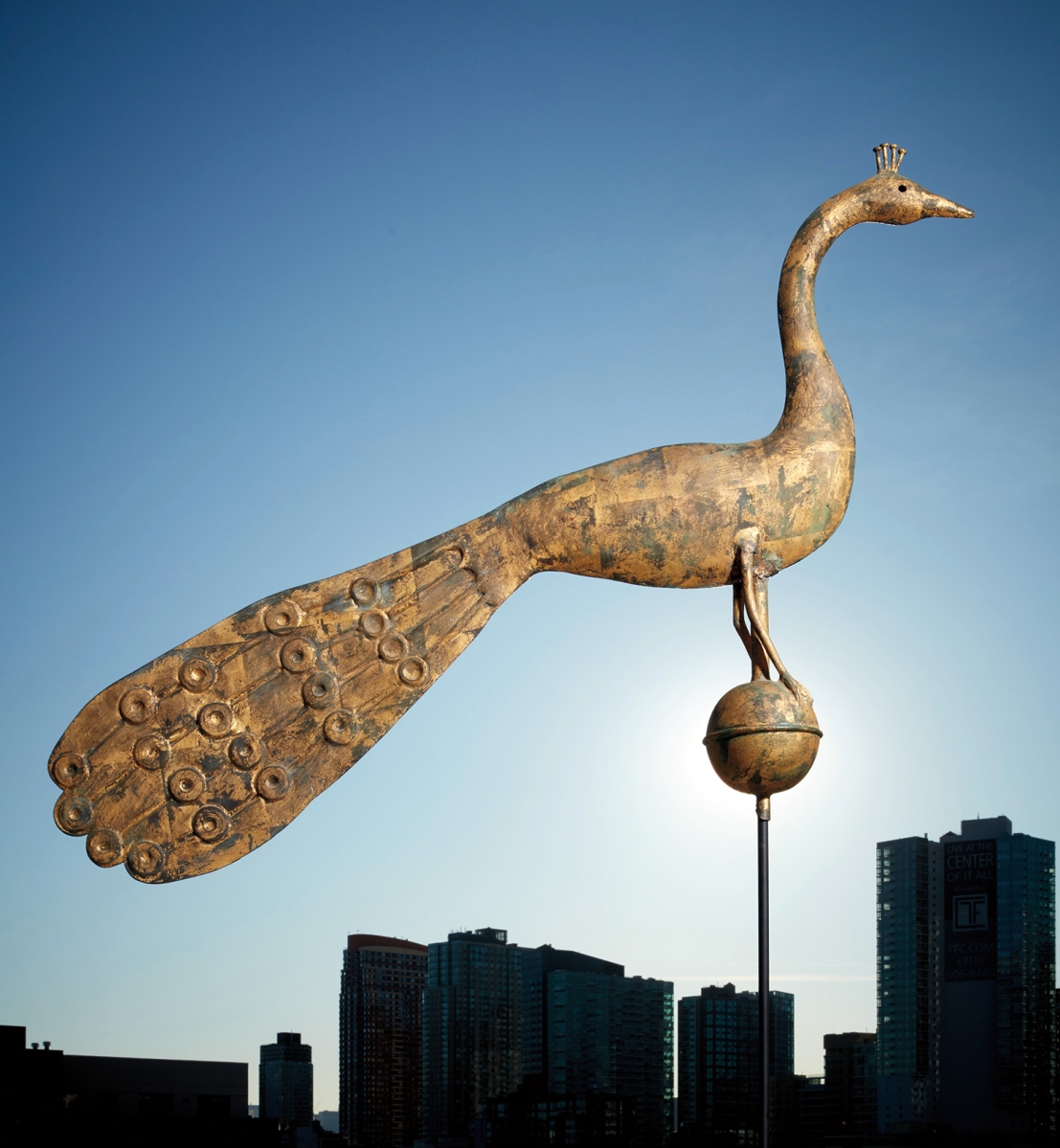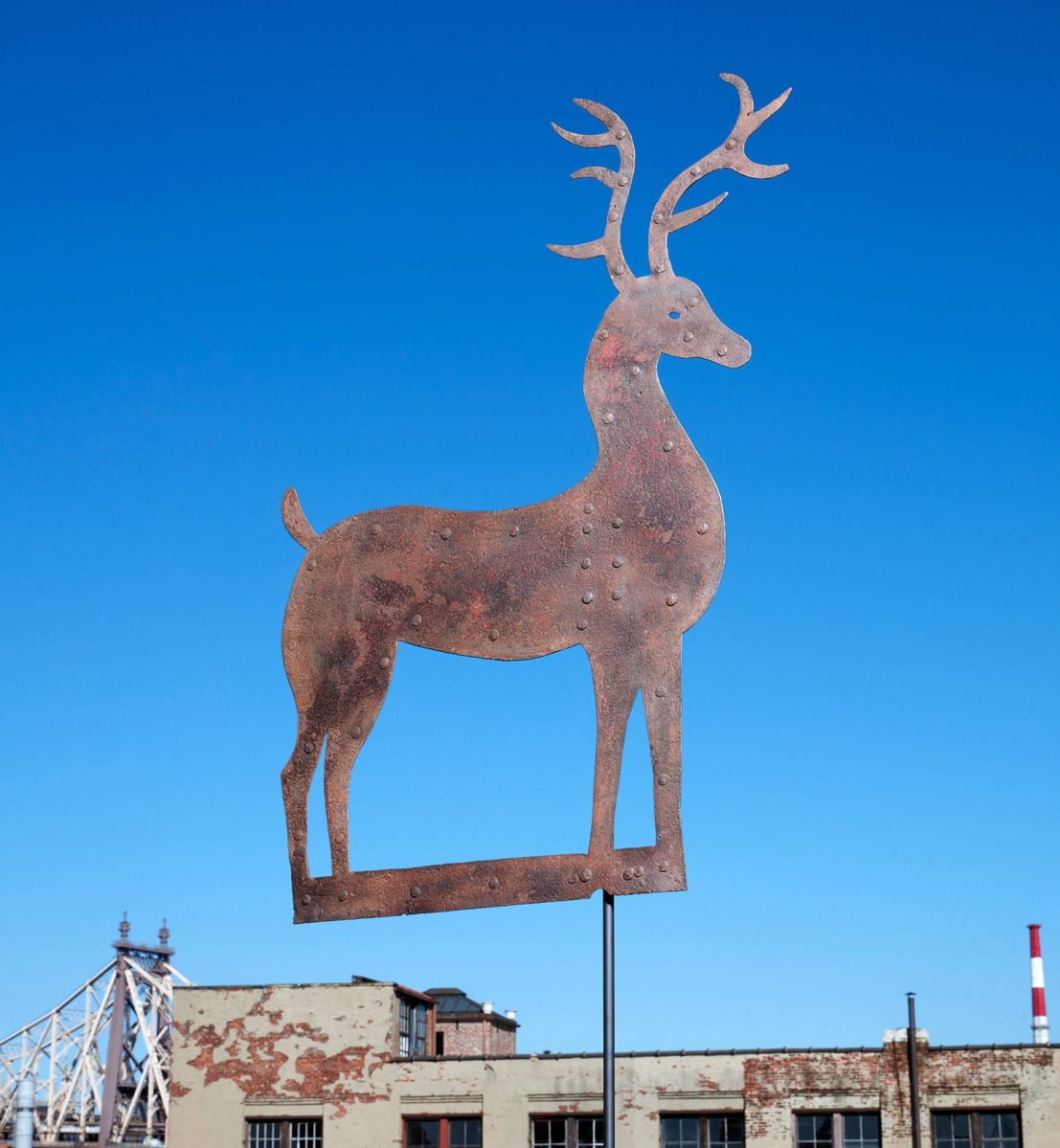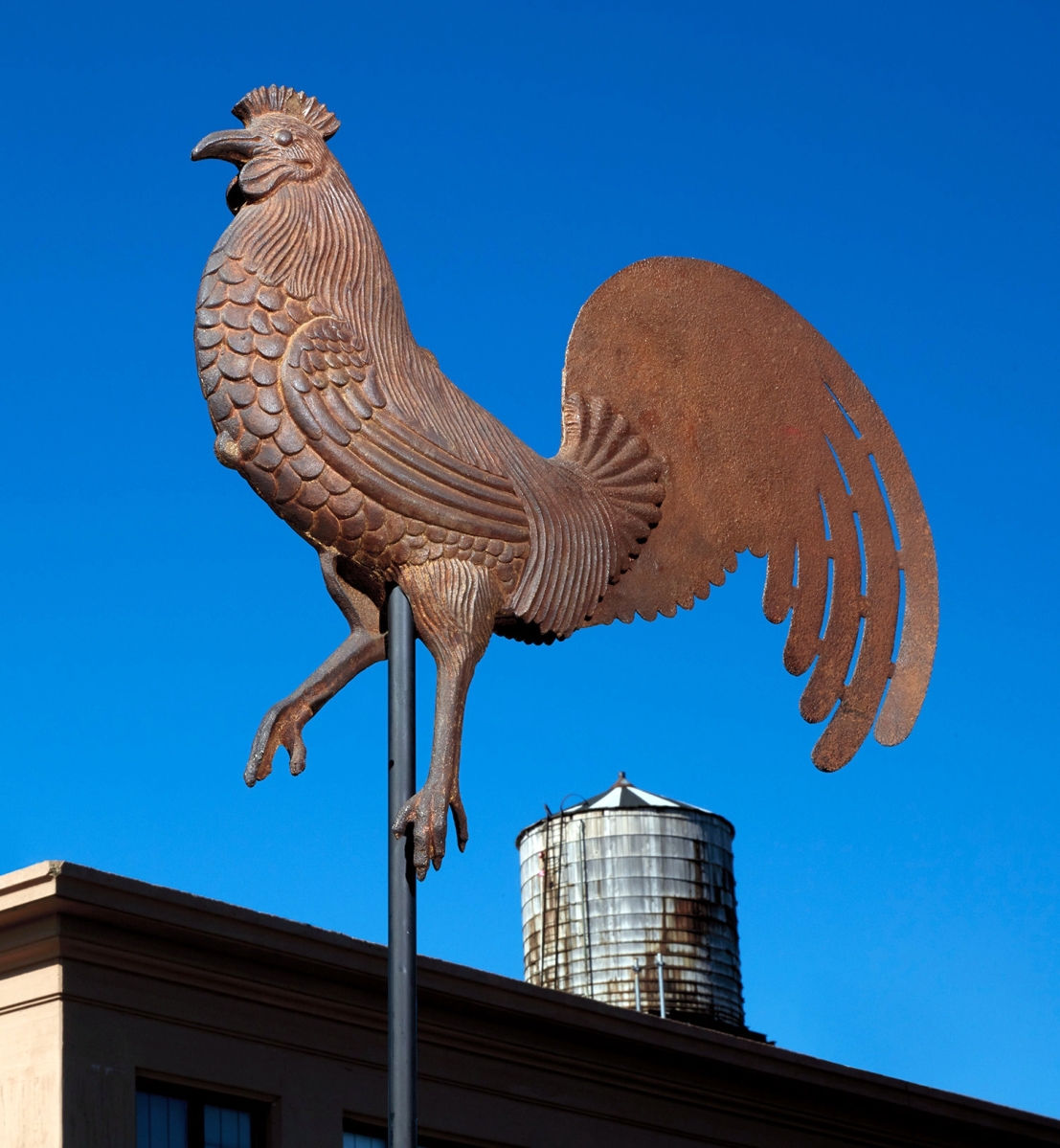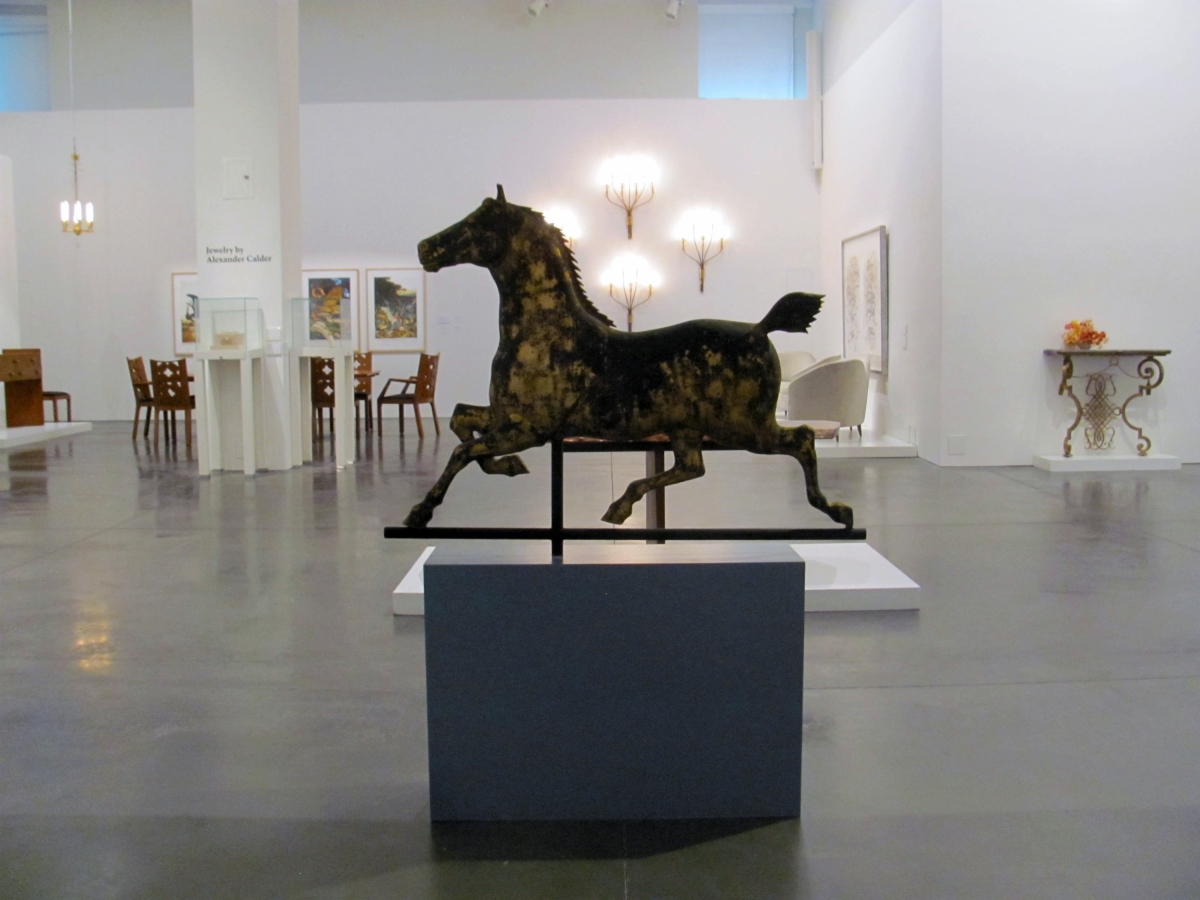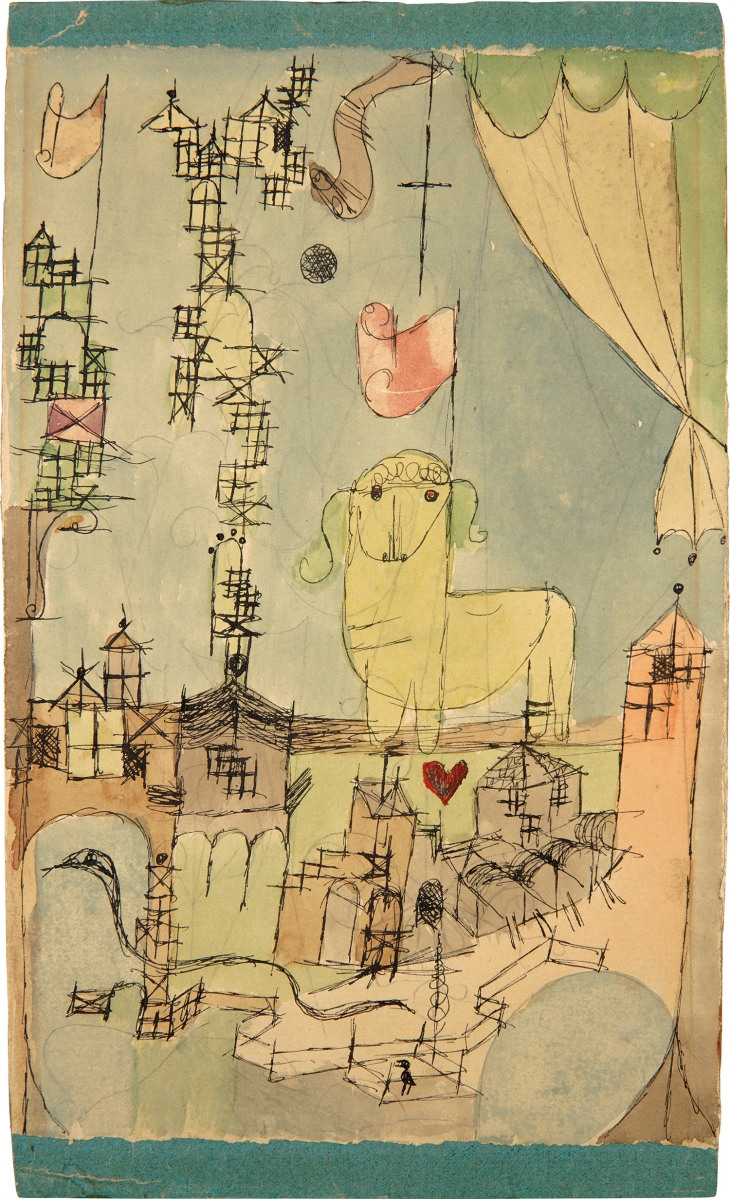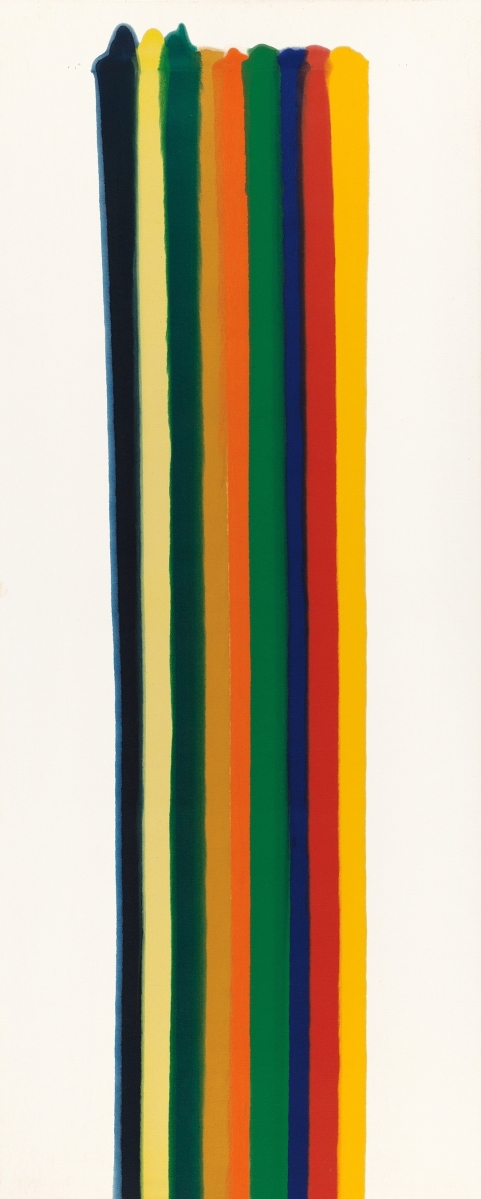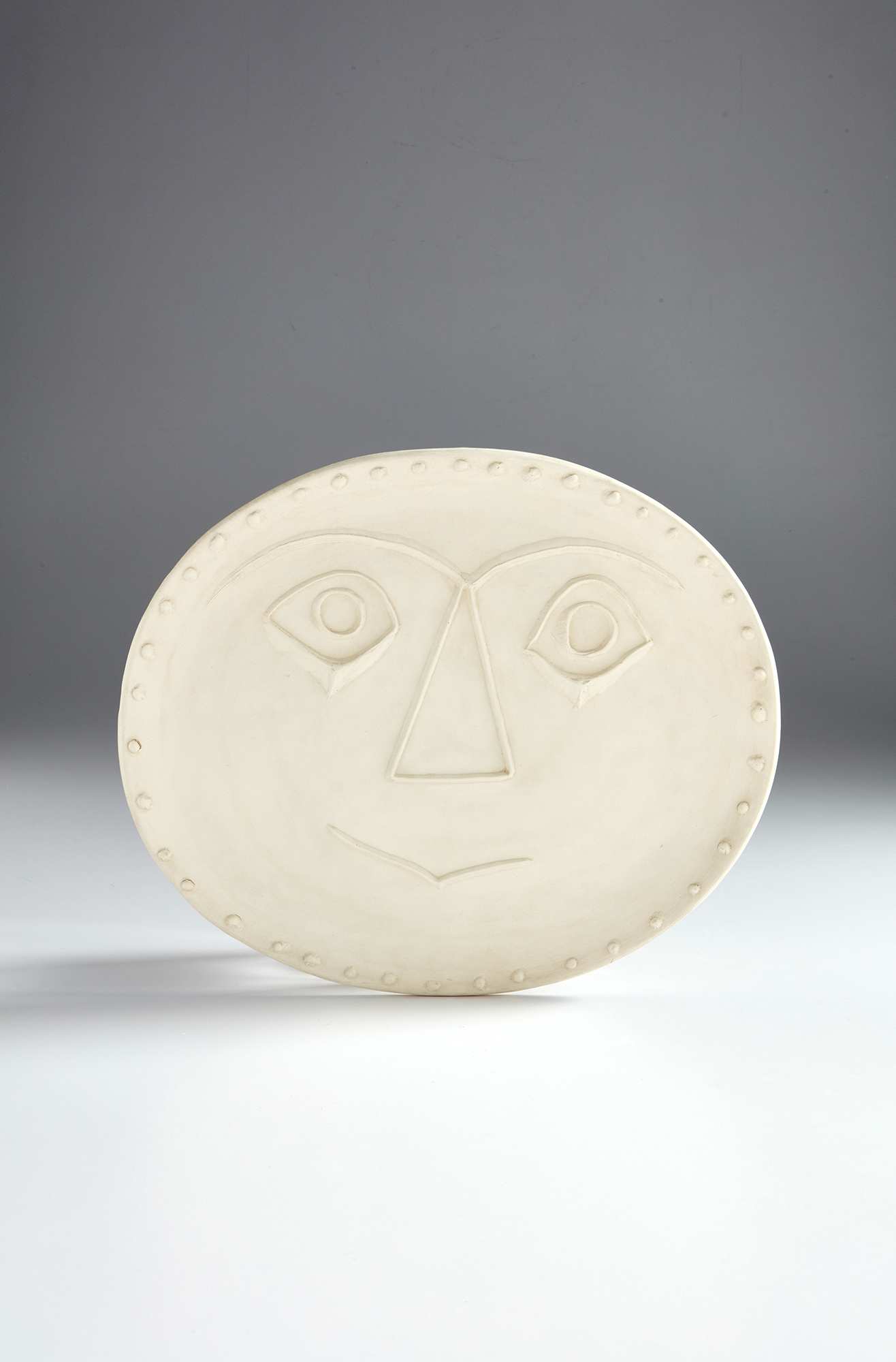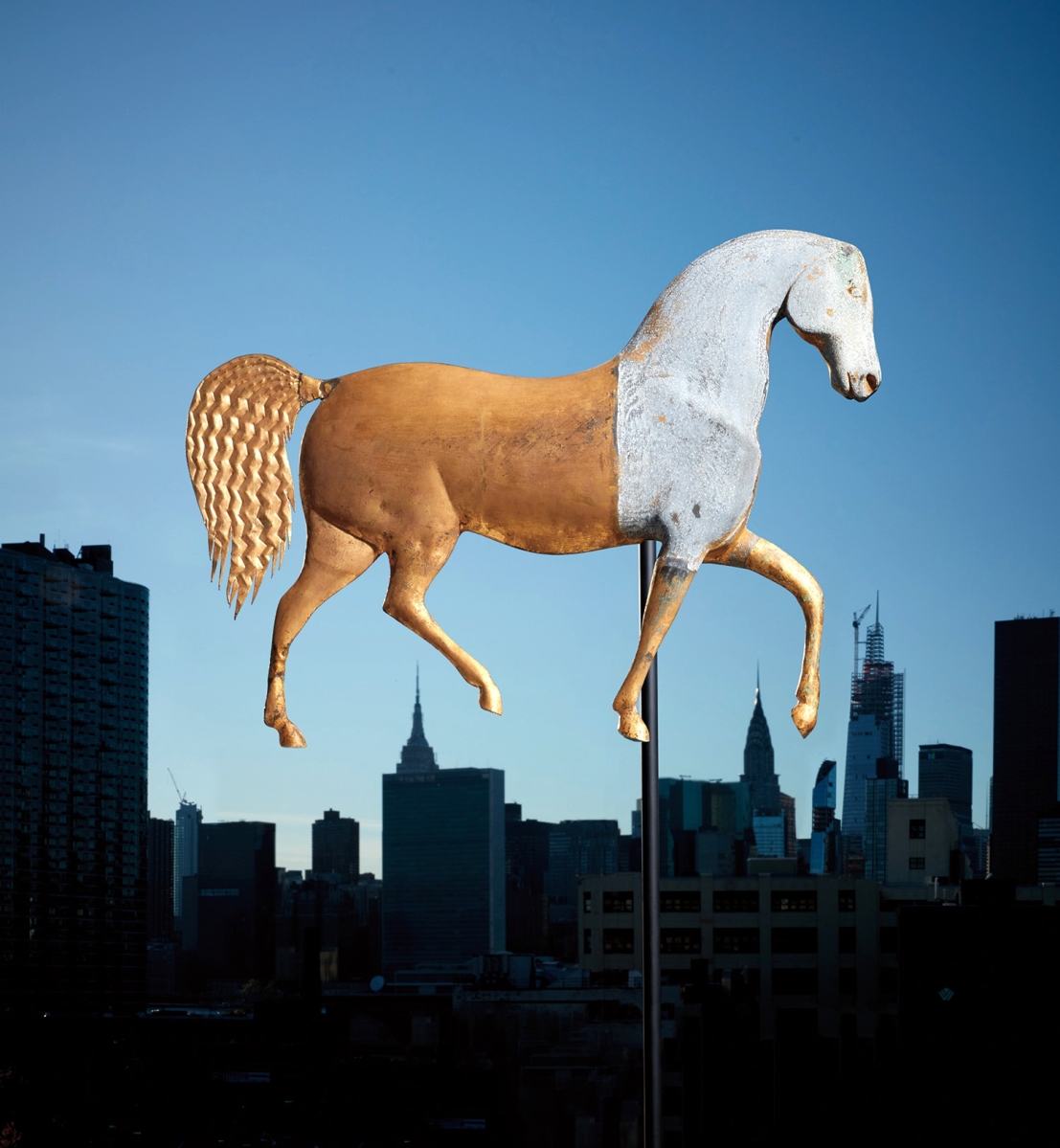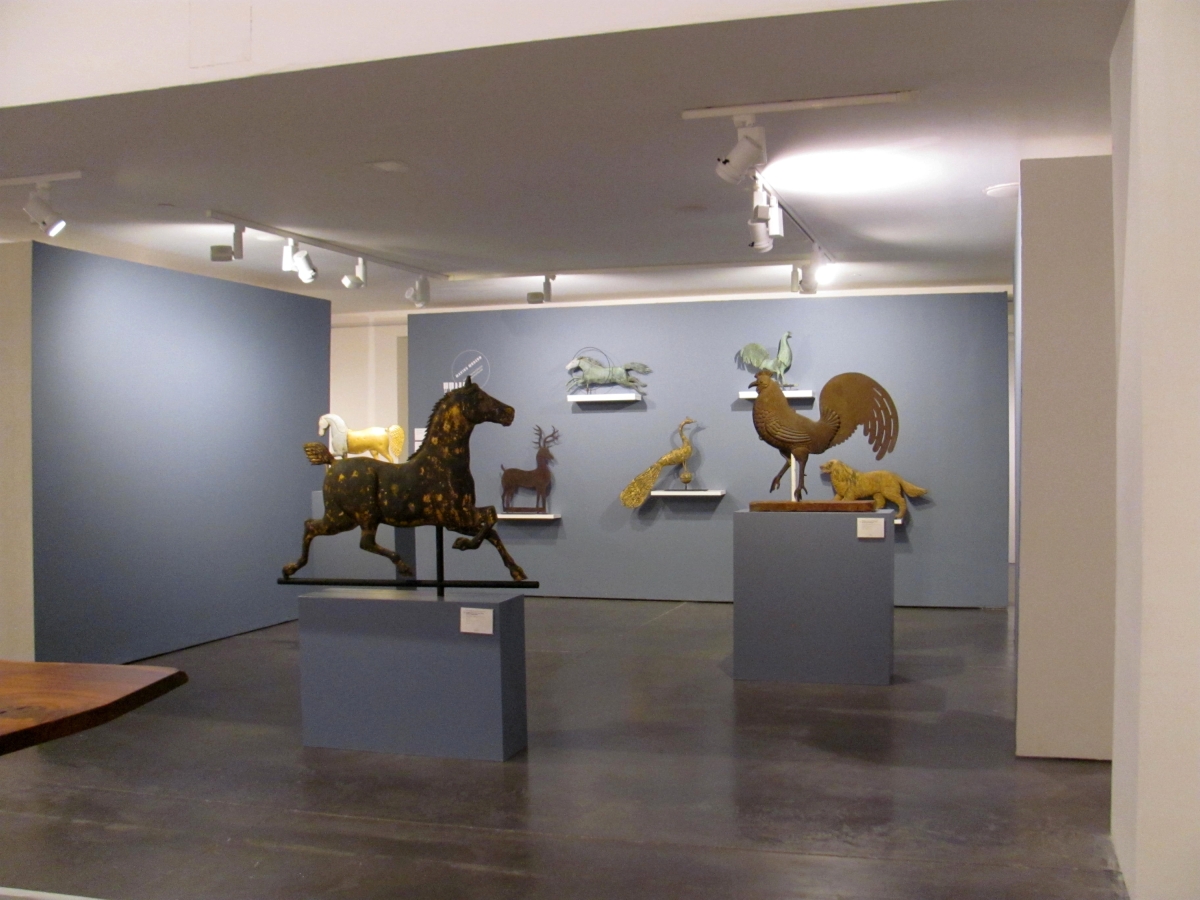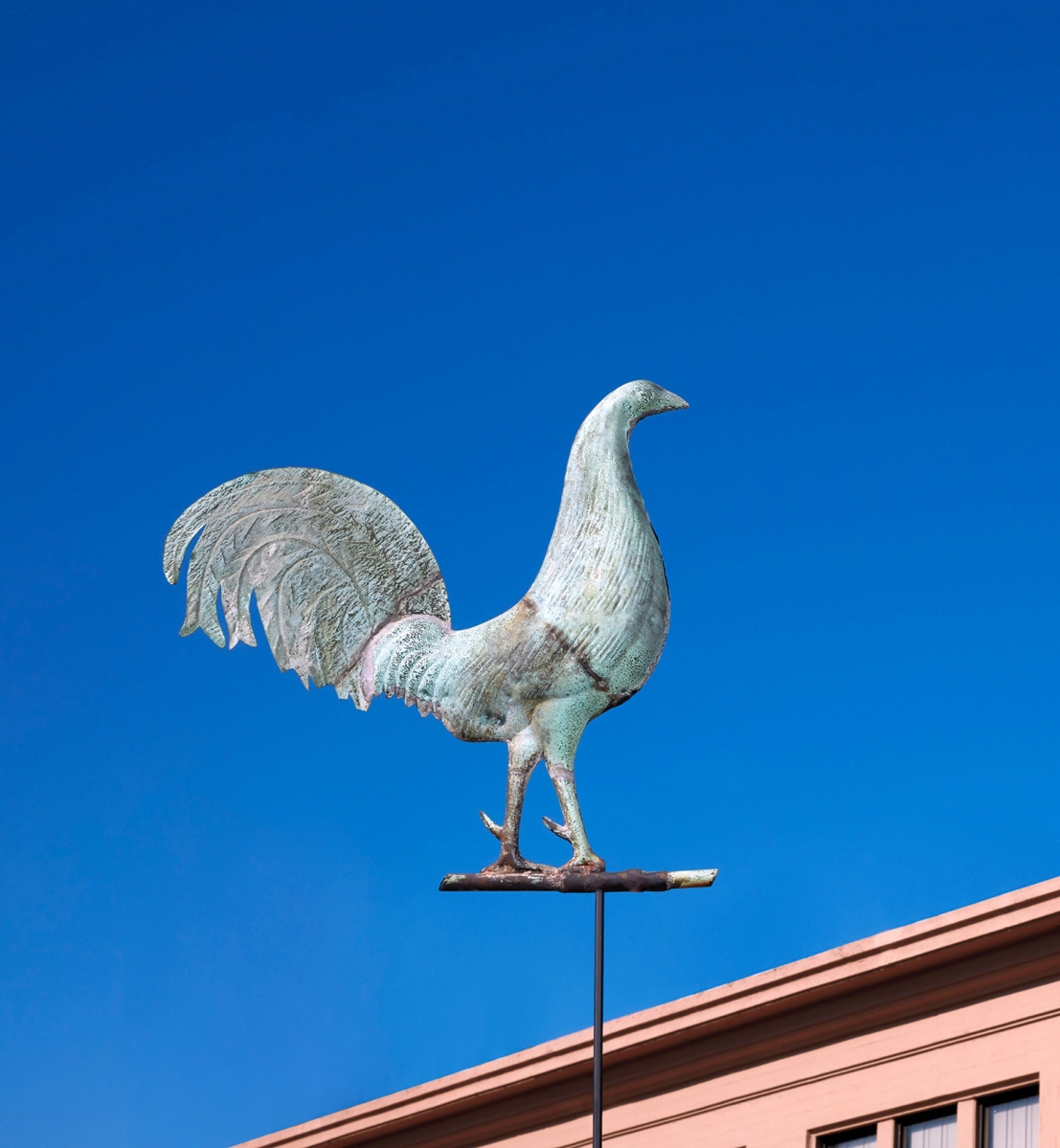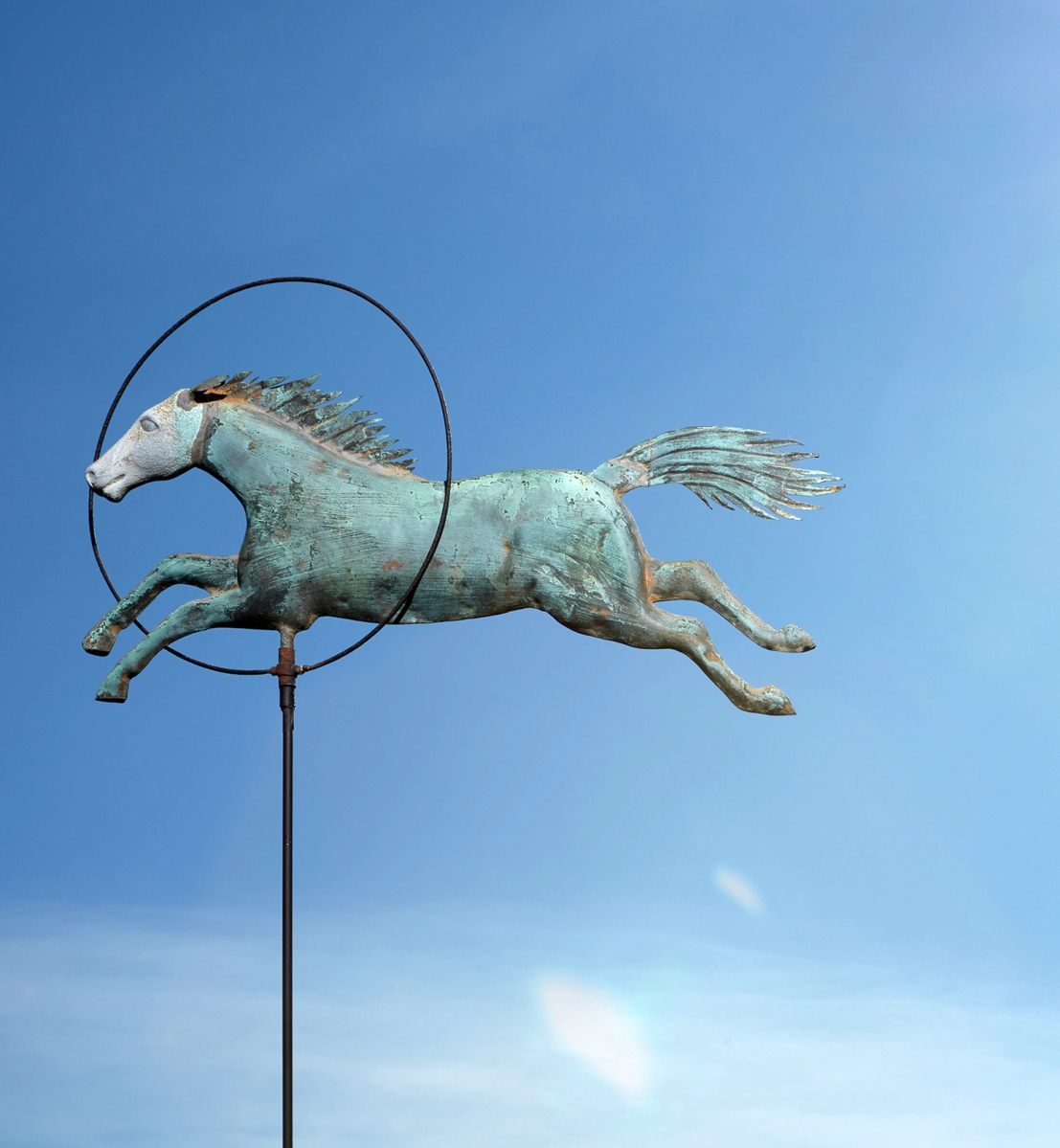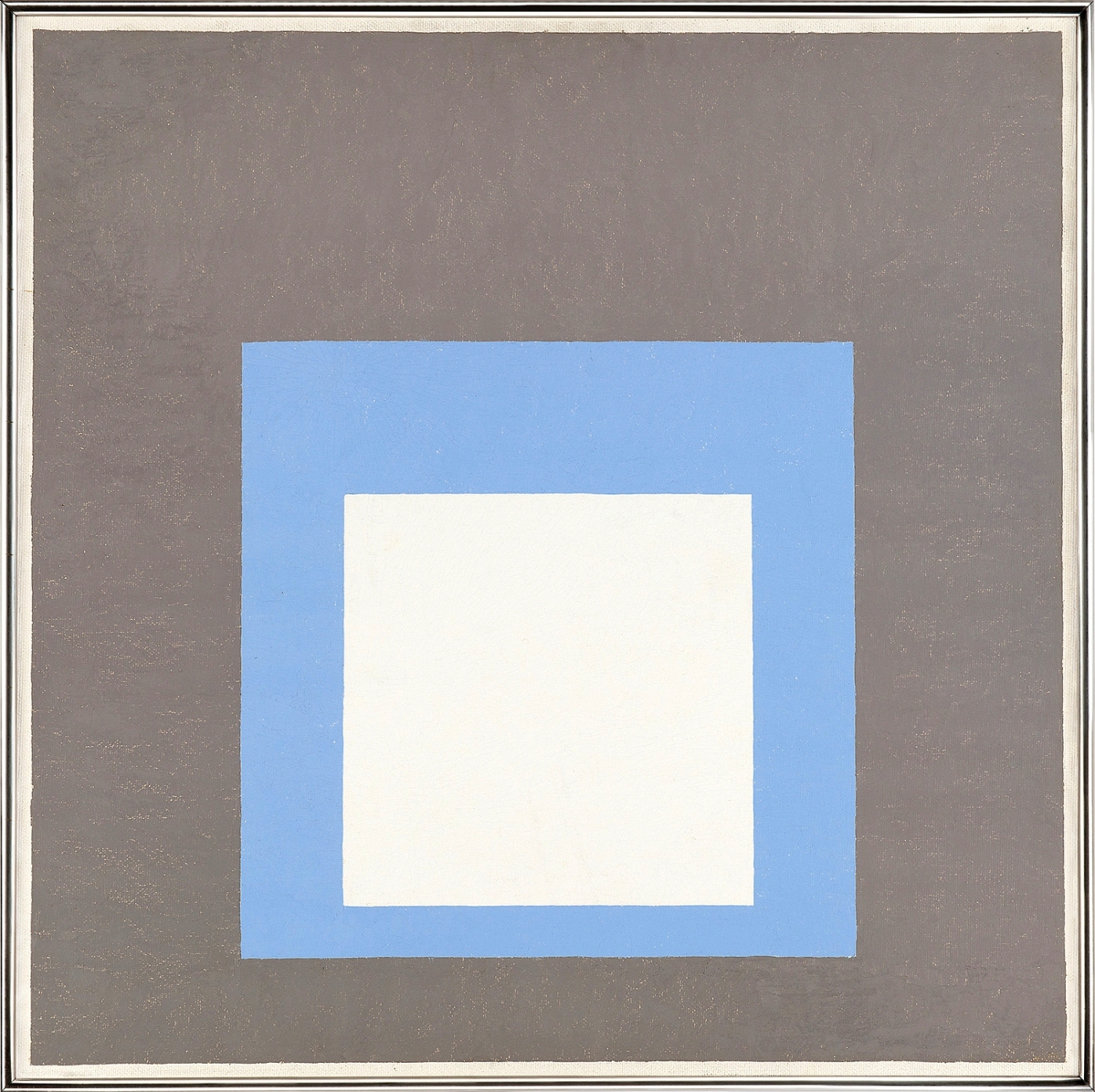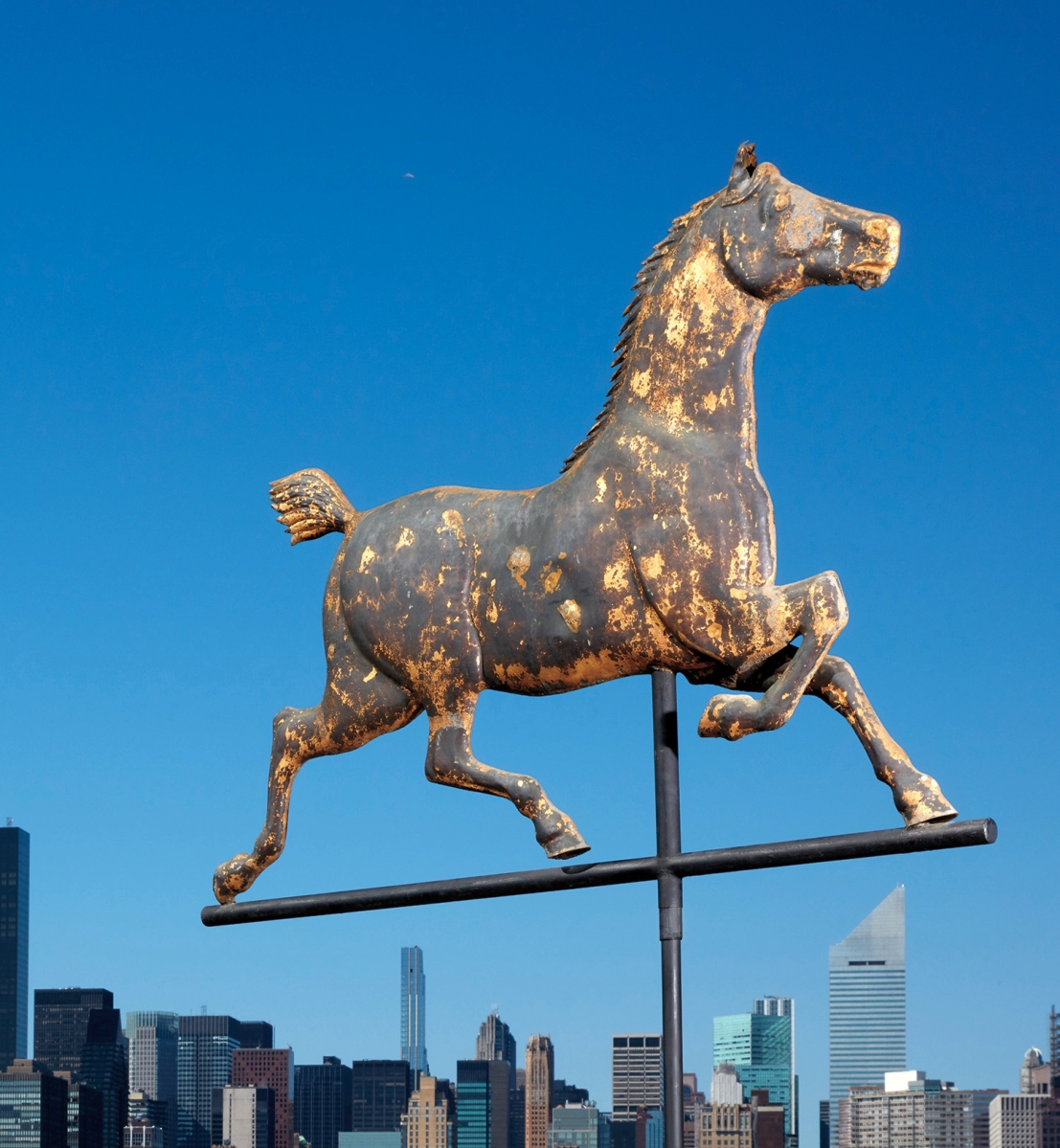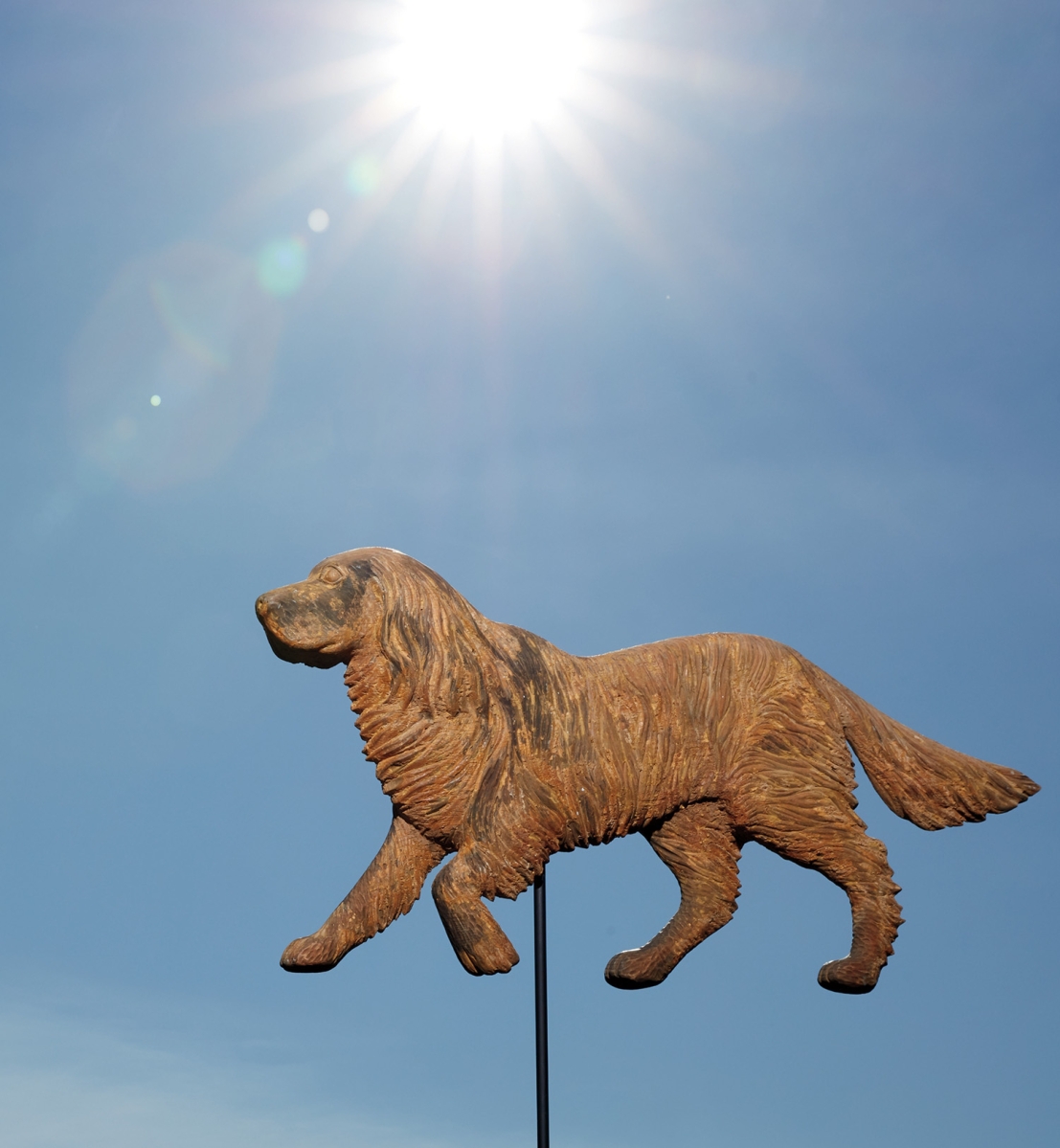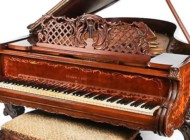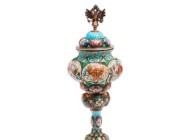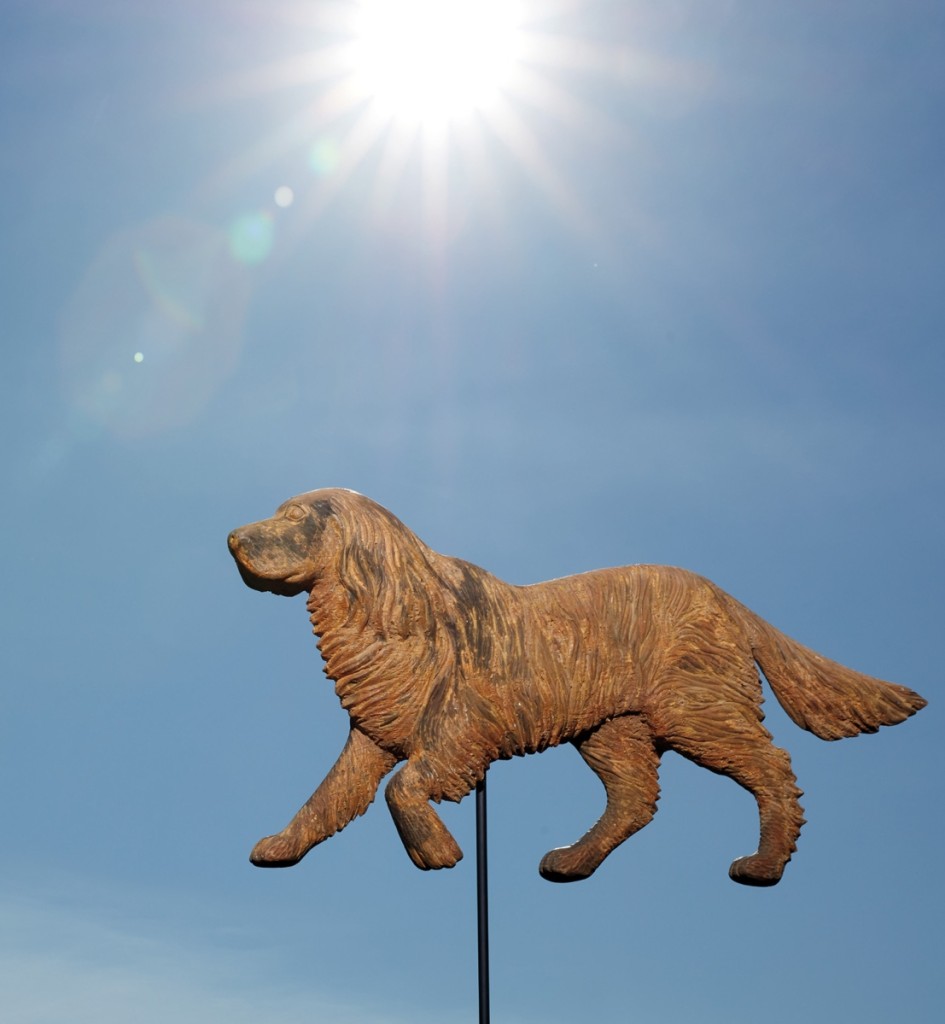
Technically not a weathervane but a weathervane mold was this carved painted and giltwood dog, in the manner of Harry Leech, Woburn, Mass., which carried the highest estimate of the group ($20/30,000). It made $22,500.
Review and Onsite Photos by Madelia Hickman Ring, Catalog Photos Courtesy Phillips
NEW YORK CITY – Phillips’ chose its December 17 Design sale to offer eight American weathervanes from the estate of Florence Knoll Bassett (1917-2019), which it is selling highlights from in a series of sales that began in the fall of 2019, all grouped in discrete sections captioned “Making Modern.”
Knoll was certainly not the first to look to primitive forms for modern inspiration; Pablo Picasso looked to African sculpture, Wassily Kandinsky was inspired by Russian folk art and American folk art motivated Elie Nadelman and Charles Sheeler. When she was collecting weathervanes in the late 1950s, the magazine Art in America featured pieces on such singularly American aesthetics as Shaker design and New England gravestones alongside that of contemporary American artists.
In a sale of approximately 175 lots that achieved a total of $3.4 million and was 80 percent sold by lot, the weathervanes were a small section that was 75 percent sold and which totaled $71,250, though postsale interest in the unsold vanes might hoist that number skyward.
The catalog photographs of the vanes were a refreshing departure from a graded tonal background format utilized by nearly every auction house that sells weathervanes. No static photo set for these vanes, which were shown flying high across an urban skyline against a brilliant blue sky that set off their bright gilding, mellow verdigris or gritty rusticated surfaces. Kimberly Sørensen, a specialist in Phillips’ New York Design department, confirmed that the photos had not been manufactured by photoshop but had in fact been shot on a rooftop in Astoria. A compelling addition to the catalog was the inclusion of two images from Knoll Bassett’s Coral Gables and Coconut, Fla., homes that showed how she lived with them.
For the most part, estimates seemed market friendly, and results came in near or within estimates, with a few lots exceeding expectations. A representative for the firm said in an email after the sale that buyers of the weathervanes “were a mix of new and existing clients, both private and trade.”
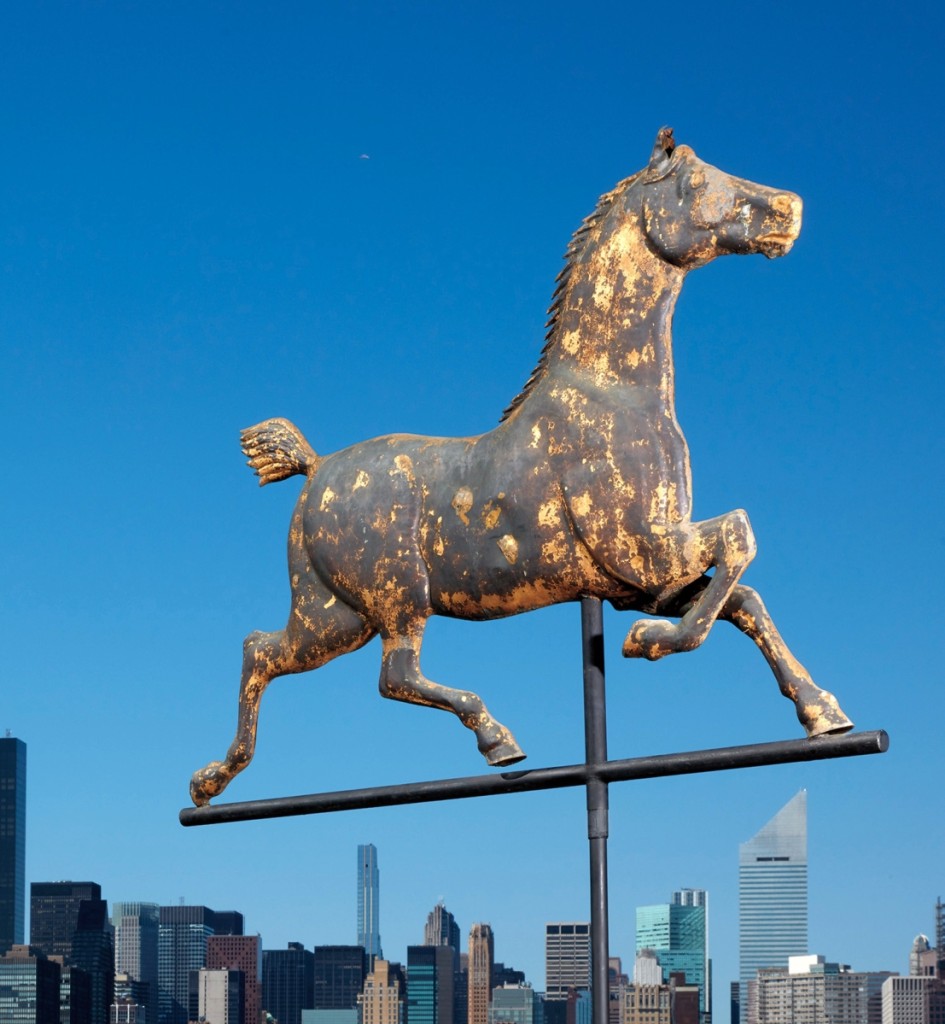
The first weathervane out of the gate was this “Hackney” horse weathervane attributed to W.A. Snow Iron Works, Boston, Mass. It finished squarely within estimate, at $12,500. ($10/15,000).
The weathervanes were offered in a discrete group approximately midway through the sale, bookended by furniture by Eames, Nakashima and Finn Juhl, as well as contemporary and modern ceramics, jewelry and silver. If one went to the preview expecting to see horses trotting amid Royere furniture or roosters crowing over contemporary ceramics, one would have been disappointed; instead, Phillips corralled them into a separate niche within one of the main preview rooms. If the lesson was to demonstrate how the primitivism of these vanes inspired modern design, it was weakened by physical placement in the preview.
The first weathervane to cross the block was a large high stepping Hackney horse weathervane attributed to the W.A. Snow Ironworks of Boston. Its gilding losses gave a dappled appearance and it carried an estimate of $10/15,000. Auctioneer Sara Krueger opened the bidding at $8,500 but after brisk competition from phone bidders, she sold it for $12,500.
The sinuous curve of the next lot – a peacock weathervane attributed to A.L. Jewell – was further embellished by the outline of the original gilding sheets, crest feathers made of nails and repousse eyes on the tail feathers. Estimated at $5/7,000, Krueger said she had interest in the lot and bidding opened at $4,200. Phone bidders quickly outpaced her absentee bid and it sold for $12,500.
The horse and hoop weathervane that followed the peacock had an appealing asymmetrical quality between the elongated form of the horse and the circular element of the hoop. The vane carried the lowest estimate of the group – $3/4,000 – and bidding opened at $2,400. Interest came from bidders in the room, on the phones and online and it ultimately sold to a buyer bidding on the Invaluable platform, for $7,500.
The vane with the lowest estimate of the group was followed by the one with the highest estimate: $20/30,000 for a carved and giltwood dog-form weathervane mold attributed to Harry Leech of Woburn, Mass. It related to a carved and painted wood English setter weathervane mold from the Esmerian collection that Sotheby’s sold for $40,625 in January 2014; the example from the Knoll collection realized $22,500 after bidding opened at $15,000.
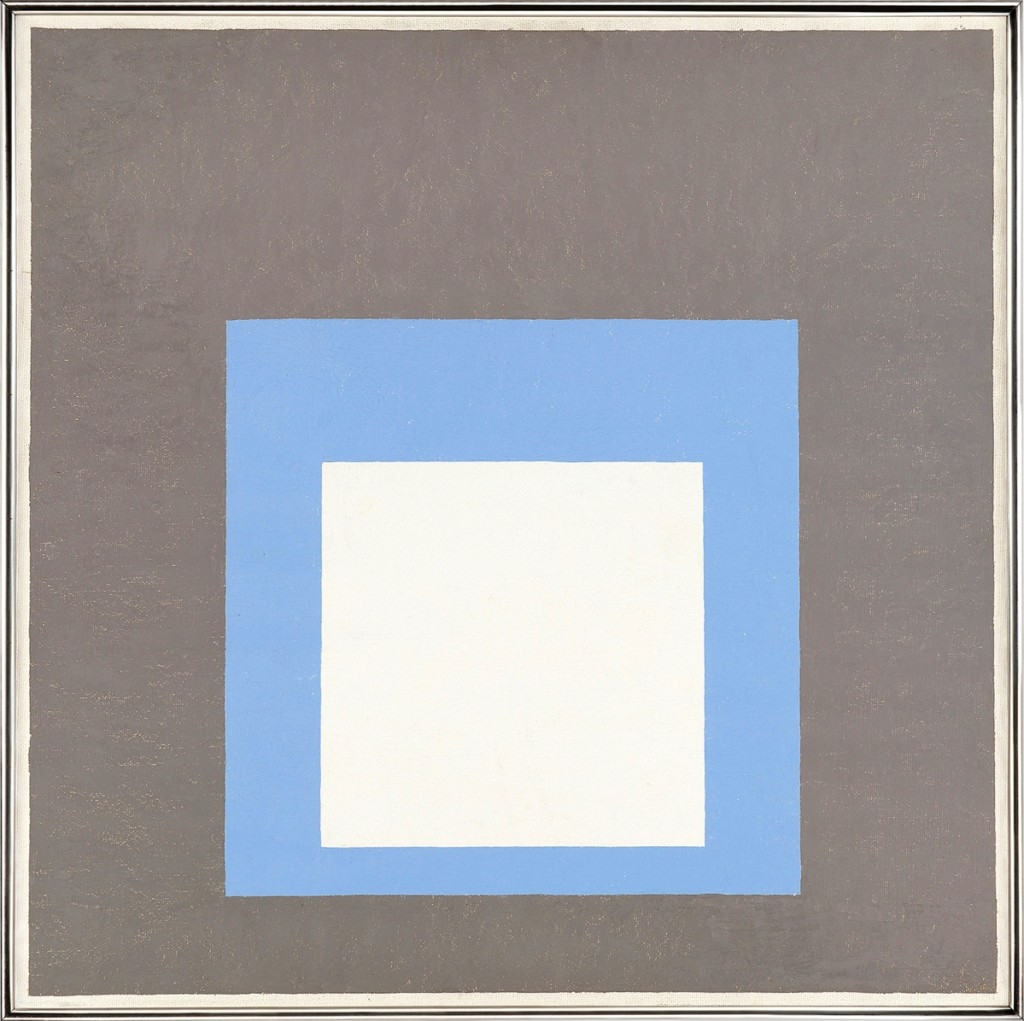
A highlight of Phillips’ November 13 Twentieth Century & Contemporary Art day sale was Josef Albers’ “Homage to the Square: Silent Gray,” which shot past its $400/600,000 estimate to finish at $1.3 million.
An “Index” horse vane that offered a striking contrast between its zinc front half and its brilliantly gilt rear half did not sell, one of just two Knoll vanes not to find new homes. It opened at $6,500 but Kruger passed it at $7,500 against an estimate of $8/12,000.
An unattributed gamecock weathervane with wonderful verdigris patina, estimated at $3/5,000, finished at $7,500 after interest from bidders online and on the phones.
Was the rusty patina of a large rooster weathervane attributed to the Rochester Ironworks off putting to buyers? Rochester rooster vanes appear with some regularity in auctions around the country so perhaps the $4/6,000 estimate was simply too much? It opened at $2,800 but passed at $3,800.
For purity of silhouette, there was perhaps no better example than the last of the Knoll vanes on offer. A stag crafted of sheet iron opened at $4,000 and bidders in the room, on the phones and even by absentee bid all gave chase but it finally ended at $8,750.
According to Vivian Pfeiffer, deputy chairman of Phillips Americas and head of business development, Phillips is still set to offer a selection of works from the Knoll estate in their spring New Now auction in New York City, with examples by Walter Leblanc, Gio Pomodoro and Francisco Sobrino, as well as an additional selection of weathervanes in a future Design auction.
When asked what the response to the Knoll Basssett estate has been, Pfeiffer, said, “We’ve been delighted with the enthusiastic response to the collection over the course of the season. Florence Knoll Bassett was so influential in the Twentieth Century aesthetic and the works of art that she chose to live with clearly encapsulate her vision. Josef Albers’ ‘Homage to the Square: Silent Gray’ soared past its low estimate of $400,000 when it sold for $1,316,000 in November, leading the entire Day Sale of Twentieth Century & Contemporary Art. The weathervanes have also been of great interest to collectors, as many are fascinated to discover what a source of inspiration these Nineteenth Century pieces were to this pioneer of modernism.”
When asked if Phillips would offer more examples of folk art, Pfeiffer said, “Phillips has made a concerted effort to break down the traditional barriers of collecting categories, especially in recent seasons. We are certainly open to offering works outside of our normal purview, especially if they capture the spirit of the defining movements of Twentieth and Twenty-First Century art.”
Phillips is at 450 Park Avenue. For information, 212-940-1200 or www.phillips.com.

